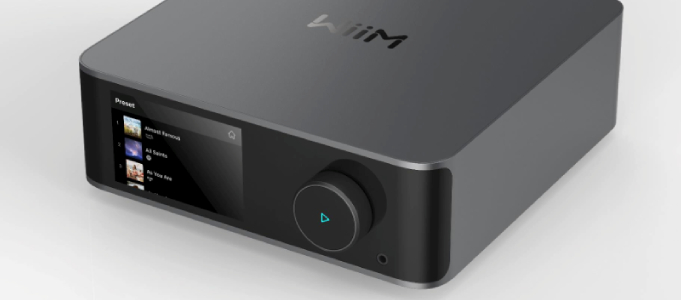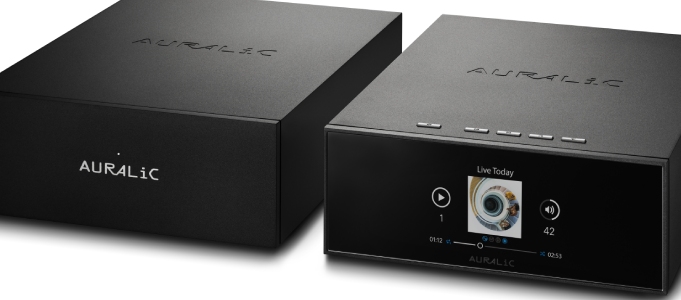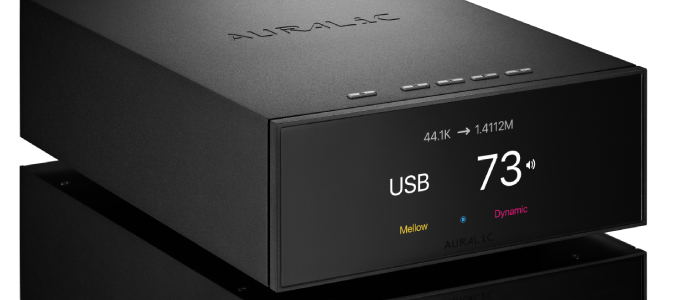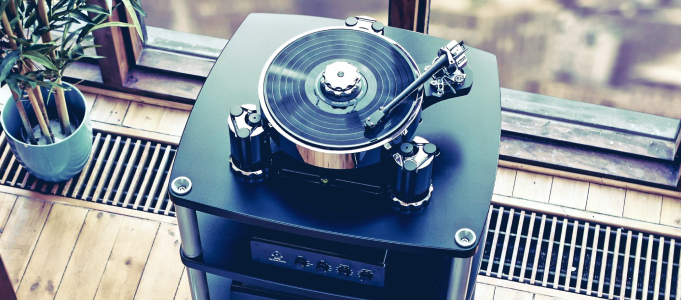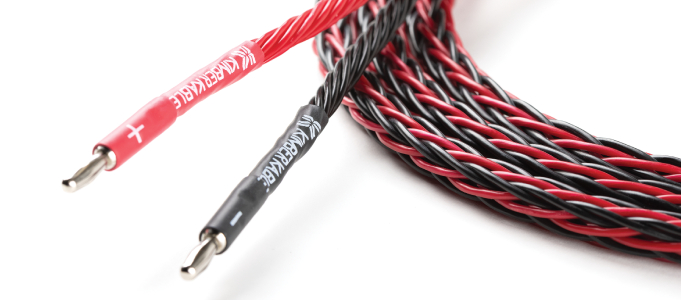PSB Speakers Alpha AM5 Powered Bookshelf Speakers Review

Mark Gusew auditions what he thinks to be one of the finest affordable small powered speaker packages around…
PSB Speakers
Alpha AM5 Powered Bookshelf Speakers
£299 
The best value audio components are often entry-level designs, as it's a super competitive market out there – and only the best survive. The new PSB Speakers Alpha AM5 has just made life even harder for many of its competitors, as I believe it raises the bar. I really shouldn't begin my review with my conclusion, but it offers excellent performance and flexibility for the money.
In case you were wondering, PSB stands for Paul and Sue Barton – a couple of high school sweethearts who married, and then saw Paul start to sell loudspeaker kits way back in 1972. Over the decades, the company has made good use of Dr Floyd Toole's psychoacoustic research from the Canadian NRC (National Research Council) with the stated intention of creating loudspeakers that sound natural. PSB is now owned by Lenbrook International, owners of the NAD and Bluesound brands, and Paul is still the Chief Acoustics Designer. All new designs are voiced in the anechoic chambers of the NRC.
The Alpha series is the most popular and least expensive of the PSB Speakers range, with two newly released powered Alphas – the smaller AM3 (£199) with a 100mm mid/bass driver, and the larger AM5 (£299) with a 133mm unit. The latter is the subject of this review. Both offer the same extensive connectivity, but the AM5 has greater output power. As some more observant readers will have already deduced, these are both in effect the powered versions PSB's Alpha P3 and P5 passive loudspeakers.
With the cabinets measuring 170mm wide by 290mm high and 240mm deep, the AM5 system is small enough to grace a bedroom or study without looking gaudy or out of place. As you'd expect at this price, its cabinets are made of MDF but are better braced internally than many. Tapping them produced a duller than expected thudding sound, suggesting sturdier construction than several price rivals I've tried.
Of course, each cabinet is vinyl wrapped – real wood veneers would make it far more expensive – and comes in a choice of matt white or matt black finishes, both of which look modern and unobtrusive. The magnetically attached speaker grill is black regardless of your choice of cabinet finish, consisting of a precision cut perforated metal plate that has a quality look and feel. Most price rivals don't have this sort of sophistication. Round the back there's a bass reflex port to raise the sensitivity of the speaker slightly, and/or aid bass extension.
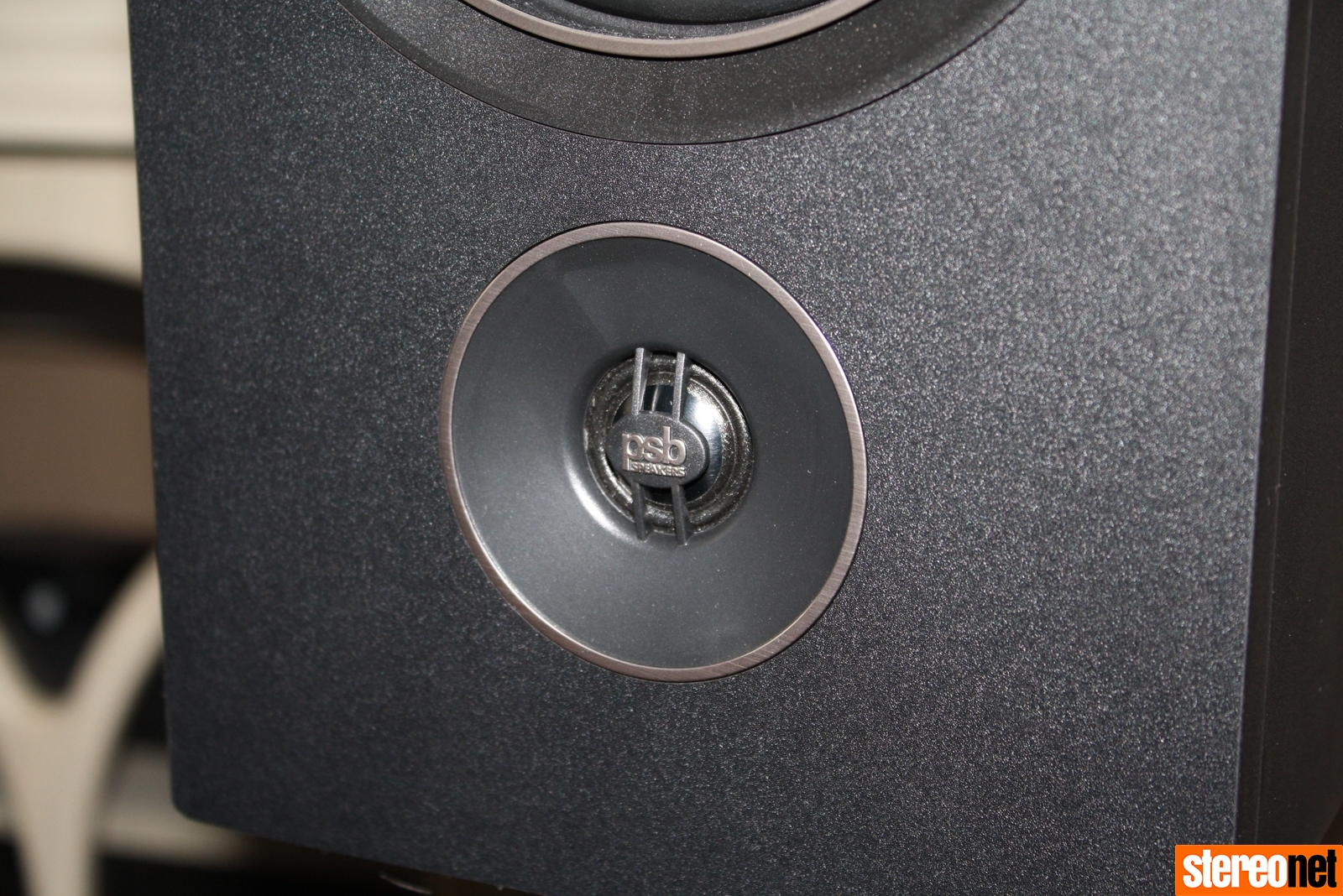
This is a two-way design, comprising a steel-framed polypropylene mid/bass driver and a 19mm aluminium ferrofluid-cooled tweeter mounted under the woofer. Polypropylene first appeared in speaker cones in the nineteen seventies, so isn't cutting edge – but it always gives a smooth and refined sound. The tweeter has an integrated front waveguide to aid dispersion. With all mounting screws hidden behind covers, the front looks very neat and can happily be displayed without the grills fitted.
With the combined resources of NAD and Bluesound, it was inevitable that PSB would use its existing technology and expertise within the PSB AM5 to provide cool-running Class D amplifiers with a claimed 50W per channel built-in. With the prudent use of digital signal processing (DSP) and its own custom drivers, PSB has tuned the frequency response and bass extension to a level normally unavailable for standalone components. The company says that there are, “exceptionally few powered speakers (that) share intellectual resources of this magnitude, making the Alpha AM5 a standout in the crowd of powered speakers.”
All connectivity, controls and the amplifier module are contained in the left loudspeaker, with the right one connected via the supplied 16AWG speaker cable. Juice comes via an external 24V DC power supply. There is a good range of inputs available, with obviously a bit of thought put into the choices made. These include a 3.5mm analogue in, a phono input to suit turntables fitted with moving magnet cartridges, a digital optical TOSLINK in, USB digital audio for a mobile device or computer, and Bluetooth streaming using the Qualcomm aptX codec.

You could argue that an HDMI input for a TV is missing, but the TOSLINK should take care of that. The same could be said of an absent input for USB thumb drives, but as you can connect your computer directly to the AM5 package, it's a moot point. Most will likely use the Bluetooth streaming capability for casual listening, but with the addition of a 5V USB power jack, connecting a Google Chromecast Audio device is a more elegant solution for casual streaming.
If you feel the need for even more bass definition, weight and extension than what's possible with the two loudspeakers, a subwoofer out connection is included. A comprehensive remote control includes bass and treble levels, and a handy 'sound modes' option that lets you expand the soundstage and accentuate dialogue clarity, which is especially good for television viewing. The remote also has the functionality to learn IR codes from other devices, adding to its versatility; I had it controlling my 4K Apple TV device.
Getting going involved connecting the single speaker cable to join the two boxes together, connecting the power supply and giving it an input. For streaming sources, I used a Chromecast Audio device with the AM5's 5V USB power, and the better sounding Bluesound Node 2i. I used the Alpha AM5 in various rooms within my home, on benchtops, TV cabinets, and dedicated stands, where the system easily gave off its best.
A single push and twist button on the front face allows the user to switch the unit on; note that it automatically switches itself off after twenty minutes of inactivity. You can then select the input and change the volume. It's simple and works very well, with additional functions requiring the nicely designed remote control. The indicator LED changes colour to indicate the specific source and other clever functions. My only criticism is that the LED is too visible and bright, especially in a dark room or at night.

THE LISTENING
The Alpha AM5 is a dynamic and punchy sounding powered speaker system that can play cleanly and without distress at surprisingly high volumes. It suits modern pop music very well, thanks to its plentiful bass – and most listeners would quickly agree that it has an appealing and accessible sound. Indeed, some visitors to my house commented that they couldn't believe the volume coming from such small boxes.
Tonally the system varies according to the sound mode it is being used in, but in Stereo Normal mode and with the tone controls set flat I heard quite a neutral balance that slightly favours the midband and upper bass.
For example, Oh Woman Oh Man by London Grammar sounded lively in the midrange, highlighting Hannah Reid's incredible voice. Treble was never bright, harsh or scratchy, and had a reasonable amount of extension before it rolled off right up top.

As I alluded to earlier, bass notes can be felt and heard – making a mockery of the size of these little loudspeakers. If you are used to the limited bass output of most similarly sized designs, then you'll be genuinely surprised by the bottom end kick available from the AM5 package.
I preferred listening with the bass two positions lower from flat, especially when the speakers are positioned closer than 50cm to a wall. This is the advantage of having an amplifier and speaker combination with clever DSP manipulation, for increased frequency range and output.
Although this system is not aimed at audiophiles, nor does it pretend to be a perfectionist product, it does a wonderful job of making music come to life and sound fun – especially when placed on speaker stands and fed with a good source. When properly sited, there was a surprising amount of detail served up. I'm Alive by Norah Jones sounded just as it should with the artificial reverb on her voice clearly heard, and the guitars reproduced beautifully. The finger snaps and claps on Chains by Tina Arena sounded lifelike, and the harmonies were clean and nicely separated.

The system has a great sense of rhythmic ability; it's very deft at highlighting the music's beat, with the fullness in the bass region helping out here. The bassline of Strict Machine by Goldfrapp sounded articulate and punchy, although there was a touch of softness to the very leading edge of the beat. This really won't bother typical users of this system and is no worse than anything else at the price – indeed quite the reverse. The AM5 gave an impressively tuneful rendition of this track, keeping almost all of its drama and impact.
Rosanna by Toto demonstrated the system's ability to create a three-dimensional soundstage, which again was better than expected at the price. Depth was probably the least impressive of the three dimensions, but this speaker system still put on a decent showing here, and the wide and tall image well outside of the actual loudspeakers helped a lot. The centre was filled in nicely without any gaps and became a solid wall of sound as the volume increased.
DIFFERENT STROKES

Watching Netflix movies on my Panasonic and Samsung televisions, when connected to the AM5 via its digital optical TOSLINK input, showed that this speaker system has decent clarity and definition – and there was no need to up the volume levels to make out the dialogue track. Having three additional sound modes with highlighted dialogue clarity was helpful at times, making for a pleasantly unfatiguing quality even after hours of viewing and listening. Movie soundtracks were augmented by this system's slightly embellished bass. The AM5 felt right at home, sounding more uniform and natural than many soundbars I've heard at around this price point, as well as having more grunt and dynamic range available.
I connected a Yamaha MusicCast Vinyl 500 turntable directly to the AM5 and was immediately impressed with what I heard. Simply Red's Money's Too Tight (To Mention) sounded dynamic and alive with room-filling sound. Many of the characteristics that make vinyl so great to listen to were on display, with near-silent backgrounds, an expansive soundstage and crisp imaging. The Yamaha's bundled Audio Technica moving magnet cartridge proved a fine match for this system's built-in phono stage.

Moving from physical media to wireless, and using Bluetooth was fuss-free and near-instantaneous. A small Bluetooth pairing reset button on the rear panel allows new devices to be paired and connected and took all of three seconds to find my mobile phone and connect it up. The sound was tonally consistent with the other inputs, and more than adequate to be used as your main source if required. The range was great at over ten metres, and the connection proved rock steady, never dropping out.
I connected my Windows 10 laptop to the micro USB port on the rear panel of this system, chose the PSB AM5 output and immediately began to play audio from stored video files and music from TIDAL. I didn't need drivers, so it was stress-free. The sound was really big, with an even larger soundstage presentation than from the analogue input. There was also a little more definition with all of the individual instruments having more space around them. Colour me impressed with the sound of the internal DAC and the easy connectivity!

THE VERDICT
 Self-powered loudspeaker systems have many advantages over separate components, besides the obvious streamlined look and simplicity. They also can have audible benefits, and in the case of the PSB Speakers Alpha AM5, the intelligent use of DSP allows it to operate at a higher level than you might expect given the size and price. The fine quality of drive units and cabinet design helps here too, of course.
Self-powered loudspeaker systems have many advantages over separate components, besides the obvious streamlined look and simplicity. They also can have audible benefits, and in the case of the PSB Speakers Alpha AM5, the intelligent use of DSP allows it to operate at a higher level than you might expect given the size and price. The fine quality of drive units and cabinet design helps here too, of course.
For this reviewer, the AM5's pièce de résistance is the inclusion of a really rather good phono input to play all your favourite vinyl. That alone makes it a well thought out solution, and the execution of the design doesn't fail it. It's an accomplished package which delivers an enjoyable sound. So anyone looking to spend around £500 on a soundbar or separates should at least hear this before making a purchase. You can thank me later.
For more information visit PSB Speakers
- Sevenoaks Sound and Vision
Distributor
Mark Gusew
Starting his first audio consultancy business in the early 80’s whilst also working professionally in the electronics industry, Mark now manages a boutique audio manufacturer.
Posted in:Hi-Fi Loudspeakers Active Bookshelf / Standmount Applause Awards 2021
Tags: psb psb speakers sevenoaks
JOIN IN THE DISCUSSION
Want to share your opinion or get advice from other enthusiasts? Then head into the Message Forums where thousands of other enthusiasts are communicating on a daily basis.
CLICK HERE FOR FREE MEMBERSHIP



